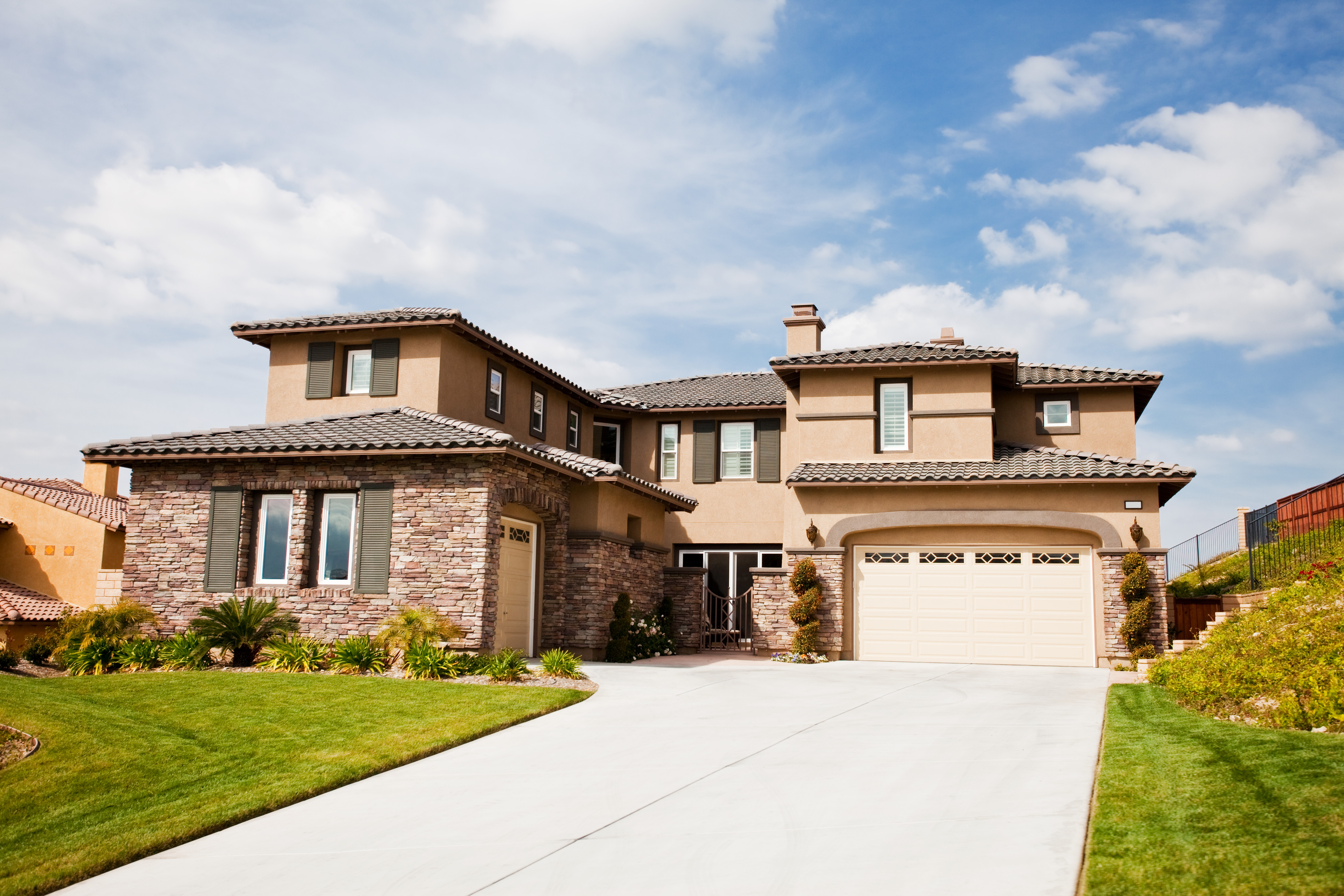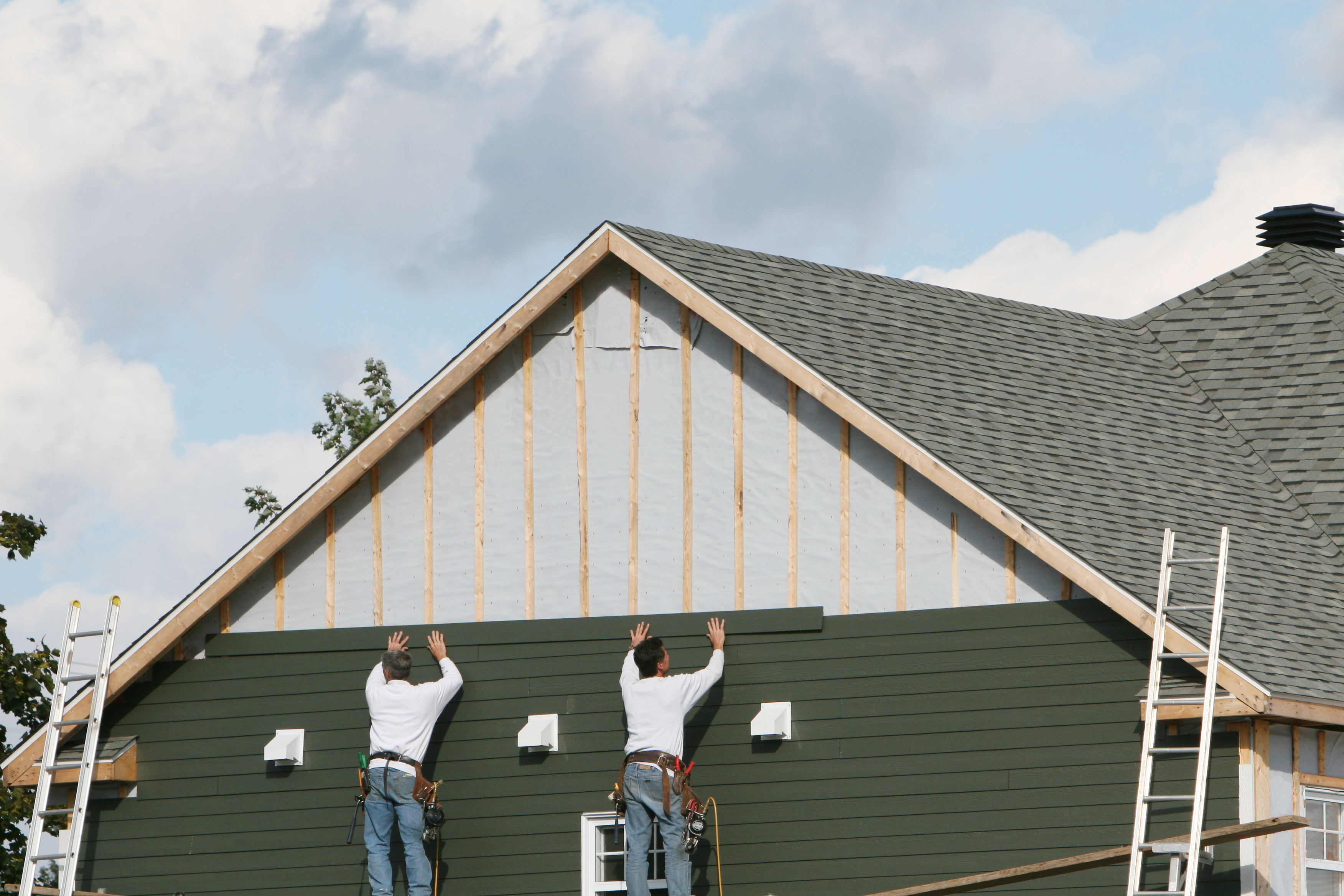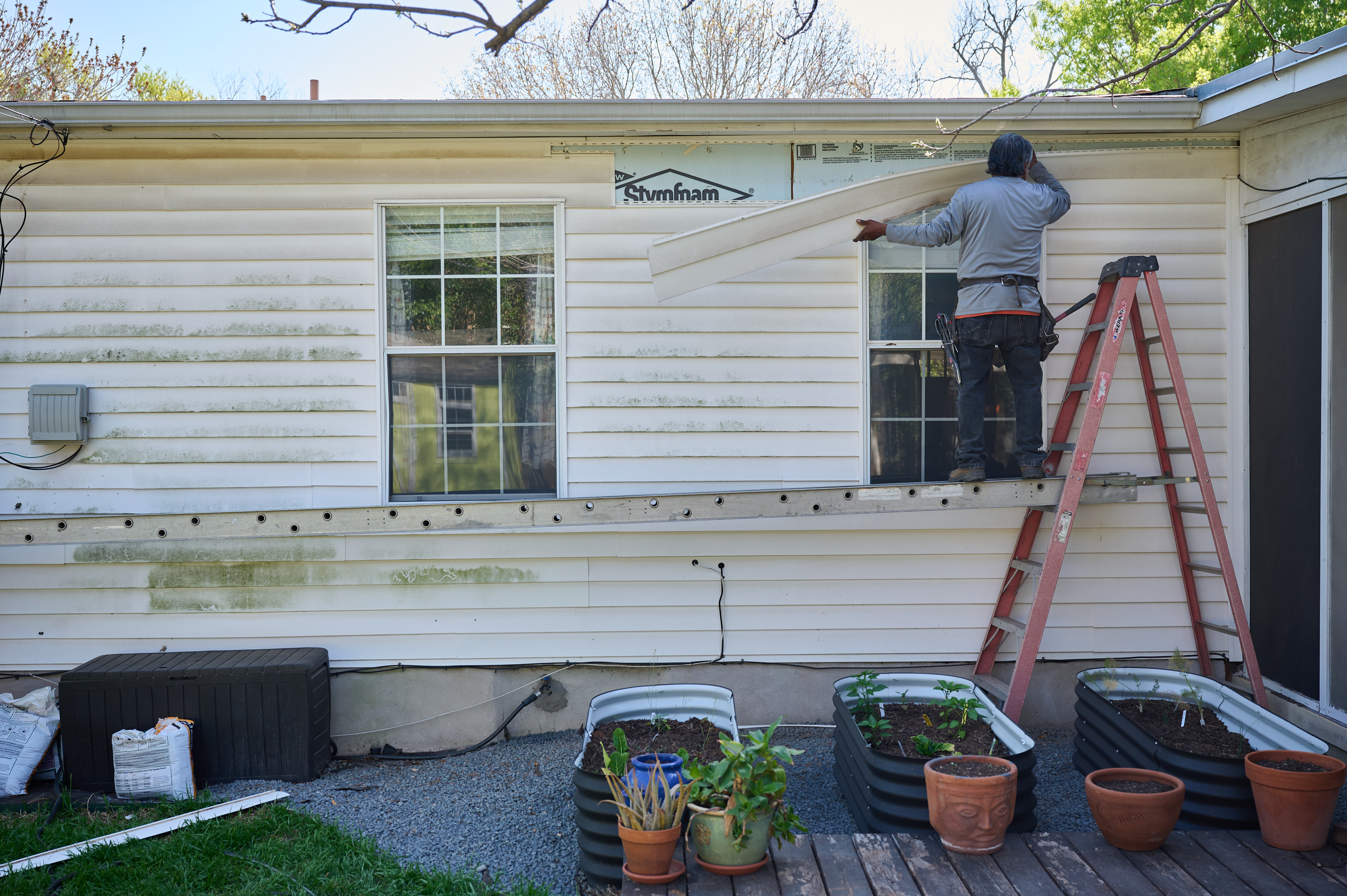
Brick veneer is a popular siding material that can boost your curb appeal. Learn all about how much this siding material costs based on factors like location and type.
Siding repairs in Washington, D.C. cost $470 on average, with most homeowners spending between $262 and $722.


Humid summers and freezing winters in D.C. can cause siding materials to crack, warp, or rot faster.
Wood siding typically needs the most frequent repairs.
Repairs in historic districts may require permits and special materials.
Siding repairs in Washington, D.C. cost about $470 on average, but they can range from $140 to $5,400 depending on factors like the type of siding, the extent of the damage, and the complexity of the fix. In a city known for its historic charm and changing seasons, quick repairs can go a long way in protecting your home’s curb appeal and preventing bigger issues down the line.

Washington D.C.’s humid summers and freezing winters can take a toll on siding, especially on older homes with original wood or mixed materials. Siding repair costs in the region depend on many different factors, including the home’s age, materials, and the kind of damage you're dealing with.
The size and shape of your home both influence how much a siding repair will cost. Smaller homes or ones with clean, simple lines are typically quicker and more affordable to work on. Multi-story buildings or homes with details like bay windows, columns, or decorative trim take more time and precision, which can raise labor costs even for a relatively small repair.
| House Size in Square Feet | Average Siding Cost |
|---|---|
| 1,000 | $1,000–$13,500 |
| 1,500 | $1,500–$20,250 |
| 2,000 | $2,000–$27,000 |
| 2,500 | $2,500–$33,750 |
| 3,000 | $3,000–$40,500 |
Siding material matters a lot when it comes to repair costs. Some siding materials hold up better in D.C.’s muggy summers and icy winters, while other siding options need more maintenance and repairs or come with design restrictions in historic neighborhoods.
| Siding Material | Cost per Sq. Ft. | Lifespan | Pros (Washington, D.C.) | Cons (Washington, D.C.) |
|---|---|---|---|---|
| Fiber Cement | $5–$14 | 50 years | Holds up well to moisture and temperature swings, fire-resistant, low maintenance | Heavy and more labor-intensive to install |
| Engineered Wood | $1–$6 | 20–40 years | Matches the look of traditional wood, easier to install, budget-friendly | Can absorb moisture if not properly sealed, especially in humid conditions |
| Vinyl | $3–$12 | 20–40 years | Affordable, low maintenance, performs well in varied climates | Can crack in extreme cold or fade in strong sun; less ideal for historic homes |
| Wood | $1–$15 | 20–40 years | Fits D.C.’s historic aesthetic, can be repainted or stained for updates | Requires frequent upkeep, vulnerable to rot and insects in damp seasons |
| Stucco | $7–$9 | 50+ years | Energy-efficient, works well on masonry homes common in D.C. | Can crack with freeze-thaw cycles, costly to patch if water gets in |
| Brick Veneer | $3–$10 | 70–100 years | Durable, matches many D.C. rowhouses and colonials, low maintenance | Adds weight to structure, expensive if repairs are needed |
| Stone Veneer | $5–$11 | 20–75 years | High-end look, good for accents, durable when installed properly | Can trap moisture if not sealed well, pricier than other options |
| Aluminum | $3–$6 | 20–40 years | Rust-resistant, recyclable, holds up to fire and pests | Dents easily, offers less insulation for winter temperatures |
Siding in Washington, D.C. takes a beating year-round, so it’s not uncommon to need to make repairs every few years or so. The region’s summer humidity, winter freezes, and big temperature swings can significantly increase wear and tear.
Wood tends to need the most frequent maintenance. Vinyl and engineered wood usually hold up longer, but can still crack or pull away from the house with temperature swings. Fiber cement lasts the longest, but even that should be inspected every few years for early signs of wear. Regular checks can help you catch small issues before they turn into costly problems.
In D.C., plenty of homes were built long before modern building codes, so pulling off existing siding can be a bit of a reveal. It’s not uncommon to find rotted wood, outdated insulation, or old repairs hidden underneath.
If the siding is old enough, there’s also a chance of lead paint or asbestos, which means extra steps and cost to remove safely. Waste can’t just be dumped either. Local rules require proper disposal, especially for hazardous materials. So it’s smart to leave 10% to 20% in the budget for whatever turns up once the first piece comes off.
Not all siding repairs are straightforward. Even if the damage is minor, homes with detailed trim, curved walls, or multiple stories take more time to repair. Repairs in historic neighborhoods can be even trickier since there may be rules about what materials can be used or how closely the fix needs to match the original design. The more intricate the architecture and the stricter the guidelines, the higher the labor cost tends to climb.
In D.C., tight rowhouses, narrow alleyways, and multi-story buildings can all make siding repairs harder to reach. If the damaged area is up high or tucked behind landscaping, decks, or fences, contractors may need scaffolding or special equipment to get the job done safely. This usually means higher labor costs, especially in dense neighborhoods where space is particularly limited.
Most contractors handle basic cleanup, but repairs that involve cutting, demolition, or old materials can leave behind more mess than expected. In D.C., where trash rules can vary by ward and some materials need special handling, disposal isn’t always simple. If the job uncovers lead paint, asbestos, or just a lot of bulk debris, you might see extra charges for proper hauling and disposal.
If the siding repair involves updating materials or matching a historic look, you might need input from an architect or designer. In D.C., that’s especially common in neighborhoods with preservation rules or strict HOA guidelines. Design fees can range from a few hundred to a few thousand dollars, depending on how much coordination or customization the project calls for.
Hiring a siding pro in D.C. often means budgeting for more than just the fix itself. Permits, insurance, and labor rates can all add to the total.
In Washington, D.C., siding contractors typically charge between $40 and $80 per hour, or around $1 to $5 per square foot for repairs. Labor tends to be the biggest part of the bill, especially for work on tall buildings, intricate trim, or historic exteriors that need extra care. Contractors with experience in preservation or tight urban setups often charge more, but they’re also the ones who know how to get it done right without cutting corners.
In D.C., you’ll likely need a permit for siding repairs that involve material changes, structural fixes, or work on a historic home. For most standard projects, permit fees range from $200 to $600. But if your house is in a historic district or falls under special zoning rules, the costs can increase.
Siding contractors in D.C. are required to hold a Home Improvement Contractor license through the city’s Basic Business License system. They also need to carry liability insurance and a $25,000 surety bond to legally work on residential properties.
D.C.’s 6% sales tax is usually included in the cost of siding materials. Labor isn’t typically taxed, but if your contractor bundles materials and labor into one price, it’s worth confirming how they’re handling it.
For larger or more complex siding projects, you might need more than just a general siding crew:
Architect: If the repair involves matching historic details or mixing old and new materials, an architect can help create the right design. Expect fees to be between 5% and 20% of the total project cost.
Structural Engineers: If opening up the siding reveals damage to framing or anything load-bearing, you’ll likely need a structural engineer. Their assessments usually cost between $350 and $800.
Asbestos Abatement Contractors: If your siding contains asbestos or lead paint, a certified abatement contractor will need to remove it. This service typically costs between $1,200 and $3,300.
Yes, quality siding repairs can absolutely boost home value in D.C., especially when they improve curb appeal or fix visible damage before listing. Buyers are attracted to clean, well-maintained exteriors, and even partial siding updates can help a home show better in photos and in person. Repairs that restore or preserve original details on historic homes tend to add the most value, particularly in neighborhoods with preservation standards.
Home is the most important place on earth, which is why Angi has helped more than 150 million homeowners transform their houses into homes they adore. To help homeowners with their next project, Angi provides readers with the most accurate cost data and upholds strict editorial standards. We survey real Angi customers about their project costs to develop the pricing data you see, so you can make the best decisions for you and your home. We pair this data with research from reputable sources, including the U.S. Bureau of Labor Statistics, academic journals, market studies, and interviews with industry experts—all to ensure our prices reflect real-world projects.
Want to help us improve our cost data? Send us a recent project quote to [email protected]. Quotes and personal information will not be shared publicly.
From average costs to expert advice, get all the answers you need to get your job done.

Brick veneer is a popular siding material that can boost your curb appeal. Learn all about how much this siding material costs based on factors like location and type.

Mobile home skirting replacement costs come down to the material you choose and the size of your home. Use this guide to budget for your skirting project.

Siding replacement costs around $11,000 on average, but several factors influence what you’ll pay. Our guide breaks down all the siding cost factors.

Discover the pros, cons, and everything else you need to know about insulated vinyl siding.

Exterior Insulation and Finish Systems, or EIFS, is a stucco look-a-like but is actually very different. It can be hard to clean and expensive to install, but EIFS is a durable, energy-efficient, and attractive option to spruce up any home.

Power washers can effectively clean dirt and grime on siding, but there’s a risk of damage. So, can a power wash break siding? Find out more.